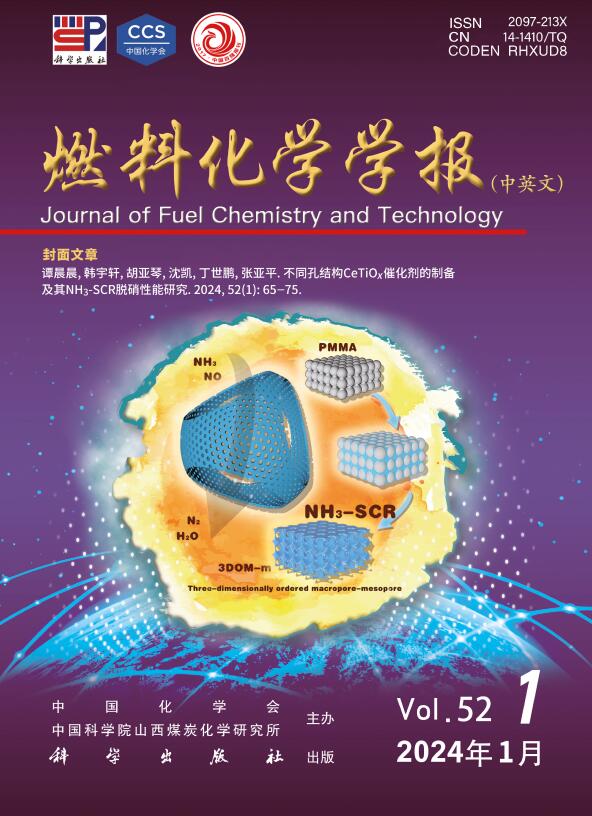Mott-Schottky electrocatalysts for water splitting
Q3 Energy
引用次数: 0
Abstract
The electron configuration of the active sites can be effectively modulated by regulating the inherent nanostructure of the electrocatalysts, thereby enhancing their electrocatalytic performance. To tackle the unexplored challenge of substantial electrochemical overpotential, surface reconstruction has emerged as a necessary strategy. Focusing on key aspects such as Janus structures, overflow effects, the d-band center displacement hypothesis, and interface coupling related to electrochemical reactions is essential for water electrolysis. Emerging as frontrunners among next-generation electrocatalysts, Mott-Schottky (M-S) catalysts feature a heterojunction formed between a metal and a semiconductor, offering customizable and predictable interfacial synergy. This review offers an in-depth examination of the processes driving the hydrogen and oxygen evolution reactions (HER and OER), highlighting the benefits of employing nanoscale transition metal nitrides, carbides, oxides, and phosphides in M-S heterointerface catalysts. Furthermore, the challenges, limitations, and future prospects of employing M-S heterostructured catalysts for water splitting are thoroughly discussed.
水裂解用莫特-肖特基电催化剂
通过调节电催化剂的固有纳米结构,可以有效地调节活性位点的电子组态,从而提高电催化性能。为了解决大量电化学过电位的未知挑战,表面重建已经成为一种必要的策略。关注Janus结构、溢流效应、d波段中心位移假说以及与电化学反应相关的界面耦合等关键方面对水电解至关重要。作为下一代电催化剂的领跑者,Mott-Schottky (M-S)催化剂的特点是在金属和半导体之间形成异质结,提供可定制和可预测的界面协同作用。这篇综述深入研究了驱动氢和氧释放反应(HER和OER)的过程,强调了在M-S异质界面催化剂中使用纳米级过渡金属氮化物、碳化物、氧化物和磷化物的好处。进一步讨论了M-S异质结构催化剂在水裂解中的应用面临的挑战、局限性和前景。
本文章由计算机程序翻译,如有差异,请以英文原文为准。
求助全文
约1分钟内获得全文
求助全文
来源期刊

燃料化学学报
Chemical Engineering-Chemical Engineering (all)
CiteScore
2.80
自引率
0.00%
发文量
5825
期刊介绍:
Journal of Fuel Chemistry and Technology (Ranliao Huaxue Xuebao) is a Chinese Academy of Sciences(CAS) journal started in 1956, sponsored by the Chinese Chemical Society and the Institute of Coal Chemistry, Chinese Academy of Sciences(CAS). The journal is published bimonthly by Science Press in China and widely distributed in about 20 countries. Journal of Fuel Chemistry and Technology publishes reports of both basic and applied research in the chemistry and chemical engineering of many energy sources, including that involved in the nature, processing and utilization of coal, petroleum, oil shale, natural gas, biomass and synfuels, as well as related subjects of increasing interest such as C1 chemistry, pollutions control and new catalytic materials. Types of publications include original research articles, short communications, research notes and reviews. Both domestic and international contributors are welcome. Manuscripts written in Chinese or English will be accepted. Additional English titles, abstracts and key words should be included in Chinese manuscripts. All manuscripts are subject to critical review by the editorial committee, which is composed of about 10 foreign and 50 Chinese experts in fuel science. Journal of Fuel Chemistry and Technology has been a source of primary research work in fuel chemistry as a Chinese core scientific periodical.
 求助内容:
求助内容: 应助结果提醒方式:
应助结果提醒方式:


